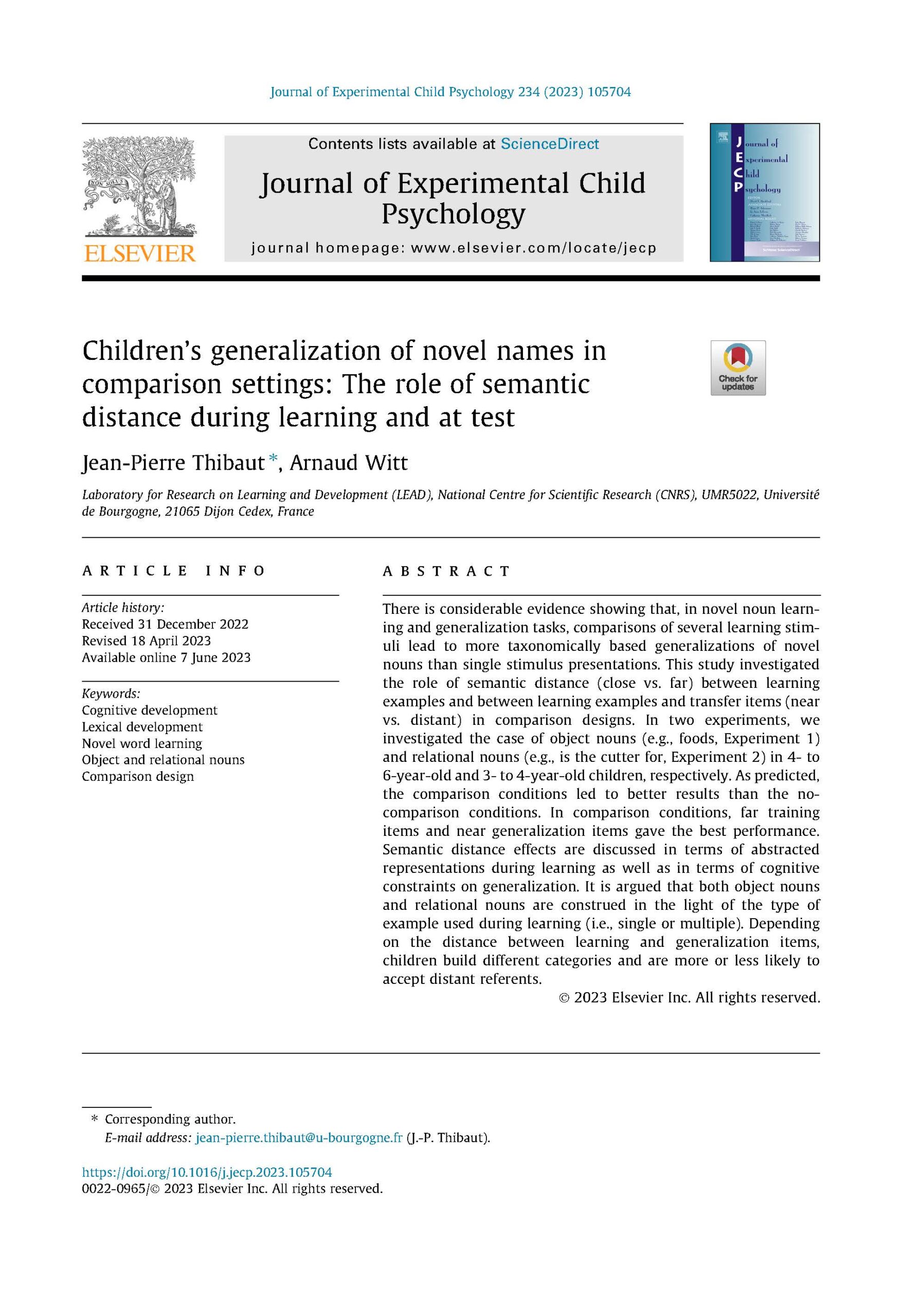There is considerable evidence showing that, in novel noun learning and generalization tasks, comparisons of several learning stimuli lead to more taxonomically based generalizations of novel nouns than single stimulus presentations. This study investigated the role of semantic distance (close vs. far) between learning examples and between learning examples and transfer items (near vs. distant) in comparison designs. In two experiments, we investigated the case of object nouns (e.g., foods, Experiment 1) and relational nouns (e.g., is the cutter for, Experiment 2) in 4- to 6-year-old and 3- to 4-year-old children, respectively. As predicted, the comparison conditions led to better results than the nocomparison conditions. In comparison conditions, far training items and near generalization items gave the best performance. Semantic distance effects are discussed in terms of abstracted representations during learning as well as in terms of cognitive constraints on generalization. It is argued that both object nouns and relational nouns are construed in the light of the type of example used during learning (i.e., single or multiple). Depending on the distance between learning and generalization items, children build different categories and are more or less likely to accept distant referents.
Children’s generalization of novel names in comparison settings: The role of semantic distance during learning and at test
